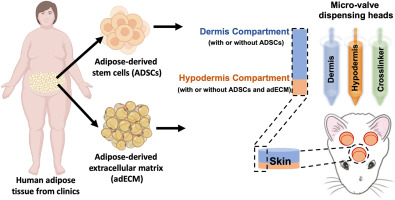A Nature article by a team from the Department of Mechanical Engineering, City University of Hong Kong has shown how 3D printed Nasopharyngeal (NP) swabs can be optimized through be more flexible and have better release as well as recovery. The team used an inexpensive Whatle 2 LCD vat polymerization system to do this, worryingly with a resin that seems to not have skin contact approval.
MXene is kind of an acid etched croissant structured material. This has been used to dip polyamide 3D printed optimized antenna structures leading to an eight times lighter antenna. Antenna is the largest 3D printed application we don´t talk about, it has huge potential for vehicles, satellites and more.
A team from Penn State University has managed to use adipose-derived stem cells and extra-cellular matrix to 3D print skin that accomplished complete wound closure in two weeks in Craniomaxillofacial reconstruction patients. This could be a potentially highly impactful application for 3D printing in wound closure for burn victims and other patients.
